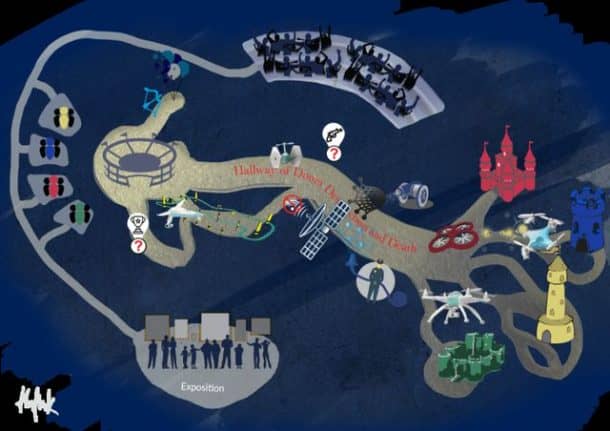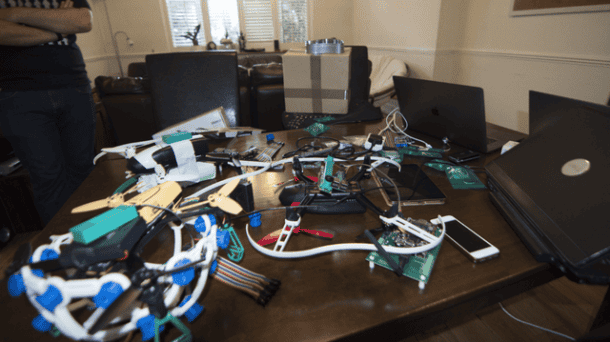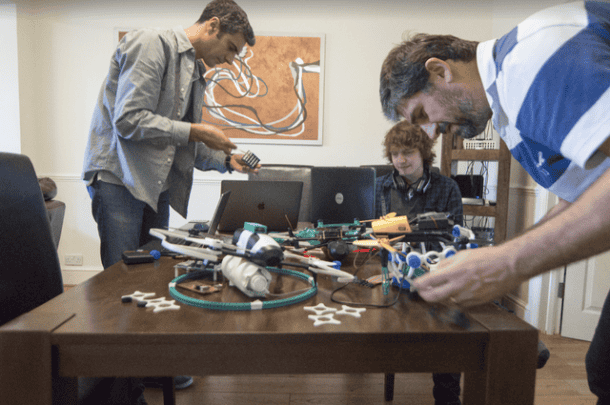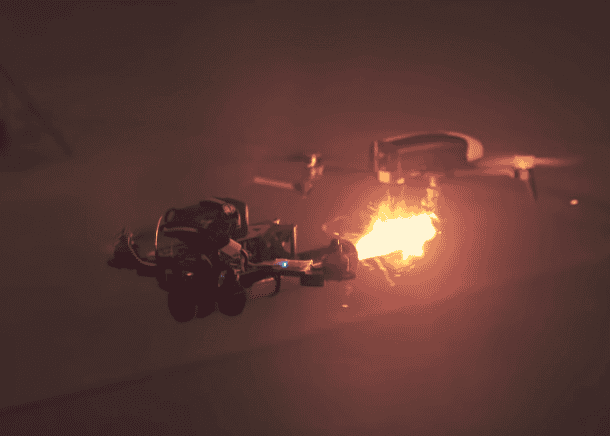DroneClash is taking place in the Netherlands tomorrow. It’s a fight that challenges its players to destroy the opponent’s drone and throw it on the ground from the sky. The event looks entertaining and it is also not just aimless destruction. Through the competition, it is also expected that the anti-drone technology will also advance. Micro Air Vehicle Lab from the Delft University of Technology, which is known for pioneering work in flapping-wing drones, is the one who came up with the idea of the event.
The brains behind DroneClash believe that drones are truly safe and there should be a way to stop the rouge operations. Bart Remes, a MAVLab project manager, said, “Because there is not yet a perfect way of trapping, catching, and bringing down drones safely, we set up this competition. DroneClash will generate new ideas in order to encourage this process.”

There are total eight teams in the event. The clash takes place in two rounds and each involves four teams. The drones meet in the First Battle Area where they try to take down as many of the competitors as possible. Survivors fly through the ‘Hallway of Doom, Death, and Destruction’ while trying to avoid various counter-drone weapons. Then they reach the Palace of the Four Queens. Each team has a queen there who must be defended while they are trying to destroy queens of other teams. The team who wins this round moves to the next level.
Many other drones competitions have some set of rules that need to be followed like size, weight, and power of the drones. But in DroneClash, there is only one rule, that there is no rule. The drones can be multicopters, fixed wing, flapping wing, or any other type. The organizers have not even declared the number of drones a team can fly at a time. Remes said, “The arena will be indoors, and if you can navigate inside this space then everything is possible. Brilliant minds will find ways of switching between multiple drones. We want the clever community to come up with cool ideas like drone swarms.”

One of the DroneClash teams called ‘The Wand’ is lead by Daniel Vernis. Some of the members of the team have development experience working with the internet of things, including Vernis himself. Each person in the team of five has a different role, whether it is related to hardware development, software or testing drones. Vernis said, “We started with a Parrot Bebop2 base. And we are slowly replacing hardware with home-printed and other lower cost alternative parts.”
According to Daniel, most teams will be targetting propellers as they are the most vulnerable feature of a drone. This can lead to a lot of shrouded or protected rotors. However, the biggest challenge here is to give these drones enough power to fly. The drone needs to have a high level of intelligence and the onboard processing needs a lot of power as well. While the team was adding cameras and other sensors, they removed the non-essential components from the drone to reduce the extra energy requirements from the systems. While Vernis was naming things in the indoor arena he said that there is “A lot of functionality we just don’t need.”
Vernis didn’t give much information about the team’s plan but they will be having a team which will have a mix of ‘attacker’ and ‘defender’ both. Both designs will be highly autonomous with very little need to refer to the satellite drone which relays communications to the human controllers. Although Remes implemented Iax criteria to appreciate the creative battles of drones, safety remains the only exception. He said, “The only real rule is that they have to make a good safety case and persuade an independent jury that it is safe.”

This restriction rules out the extreme weapons like machine guns and rocket launchers. It is also a reflection of the restrictions on counter drone systems in a civilian environment. If an airport or a stadium is being protected by a drone, it also has to avoid endangering innocent people and the aircraft. Nets are considered the safest way to bring down a drone which is carrying explosives or other lethal payloads. Japanese police have demonstrated a drone which nets unmanned intruders. The Tart S6 Killbot which is developed for the Air Force Research Lab is armed with a paintball gun and fires net projectiles.
If they are expecting nets wielded by opposing drones or fired at them in the Hallway of Doom, teams can also develop drones with net-resistant rotor blades shrouded by wire mesh. Designers can also borrow ideas from the ducted fans inside the Honeywell T-Hawk. They can also equip drones with net cutters. Videos uploaded before the competition shown that the Decepti Drone team has some sort of dart gun while the team FBC2T’s video shows an entangling device. These videos might also be fake to put some fear in the opposition’s heart.

There are many other non-lethal ways to stop the drones. The US Military used DroneDefender to protect against the grenade-dropping drones in Iraq. Russian-backed rebels used jammers to stop Ukraine’s growing arsenal of tactical drones. The participants of DroneClash might build jam-resistant drones or the one which is autonomous to fight if the communication is interrupted during the fight.


